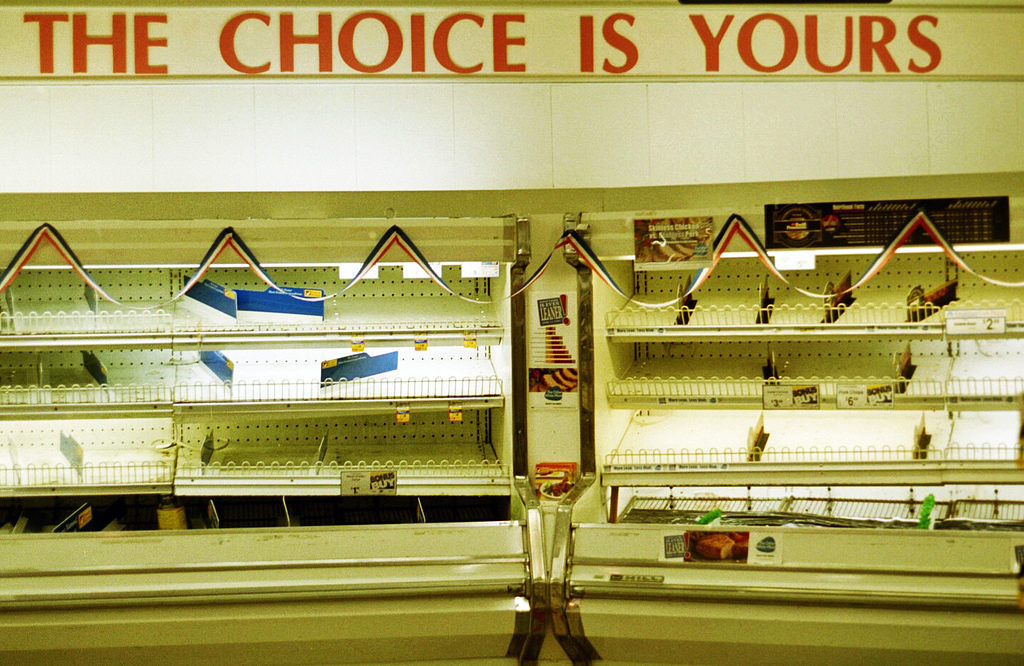
Just about a month ago, a survey suggested that traditional grocery stores would never really go away, despite increased competition from the likes of Amazon and Walmart. Everyone has to eat, right? And not everyone wants to buy their food online or in a massive superstore.
But there’s new evidence that the shift away from neighborhood grocery stores is already happening – which could spell trouble for the entire industry.
The doomsday drumbeat began earlier this month with a report by Inmar Willard Bishop Analytics. Its annual “Future of Food Retailing” study predicted that the number of traditional grocery stores in the U.S. could plunge 25% by 2021. So out of the 25,000 stores that exist today, some 6,000 could cease to exist within the next four years.
The report predicts that more grocery shoppers will gravitate toward small-format stores like ALDI, Lidl and dollar stores, while others will frequent larger competitors like Costco and Walmart, and still others will opt to buy groceries online – leaving traditional grocery stores lost somewhere in the middle.
Some may question whether people’s grocery shopping habits will really change that rapidly in just a few years. But another report indicates the change is already under way.
The University of Nebraska-Lincoln last week released the results of its annual snapshot of small-town America. Its “rural poll” aims to take the pulse of heartland residents on a variety of issues. This year, the poll asked what types of stores rural residents are visiting for their regular grocery shopping.
And it found that even rural residents who have access to small, local neighborhood grocery stores are bypassing them to do their shopping at out-of-town supermarkets or supercenters instead. Only 29% said they shop at a local grocer. The rest report traveling up to 30 minutes or more to visit a larger store in a different community.
“Today’s mobile and connected society may mean residents no longer primarily shop where they live,” the report found. Respondents said the quality, cost and selection of a store’s food is more important than a convenient location.
Some of those small-town grocers could be among the 6,000 stores that Inmar predicts will disappear in a few years. Bigger chains such as Kroger, Albertsons, Publix and the like may survive and even thrive. But the independents and neighborhood stores could be the first to go. Everyone needs groceries – but there are a lot of choices now when it comes to where you buy them.
So if your store is one that doesn’t make it to 2021, you won’t go hungry. You’ll just have to change your shopping habits – just like it seems everyone else already has.
You may also like:
We Started Buying Store Brands Because We Had To. We’re Still Buying Store Brands Because We Want To.
More Coupons, Fewer Tips – This Is How We’re Trying To Fight Inflation
Grocery Shoppers Love Ordering Online – But This Is How It Could Be Even Better
Survey By Self-Checkout Provider Concludes Shoppers Love Self-Checkout










